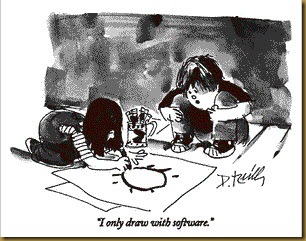I have not seen much work in the Qualitative Congress around issues that address topics of GLBT issues.
With such an interesting topic (about which I seem to know rather little), it at first seems unfortunate that the first presenter is reading his paper. It seems like it may make a useful discussion instead of a paper read at us, but given how this topic does rivet interest and passion, perhaps it may turn into a qualitative bitch session where research goes out the window if there were not a formal presentation. Interesting thing to consider while listening to the paper itself, especially with the very specific legal issues that are being mentioned. Interesting how there is some work that the presenter is using around the way things are defined, and how these are legalistic issues. Really interesting researched essay, with research meaning finding legal sources, but I am not clear where the research is from this perspective of social research. I kept looking for method, data, etc. Perhaps this is more of an autoethnographic piece? I think I may need to read it . . .
Another person is speaking now, and he mentioned he searched through the literature (LA Times newspaper) and did an analysis for dominant themes. This person mentioned that the term “sexual preference” was not used, with the term sexual orientation used instead (seeming to remove the concept of preference and choice). Another theme is that this is the will of the majority (those who passed the initial law), and then there was another theme of prominent persons and organizations that do or do not support this proposition. What came across, is that the newspaper did not seem to be anti-gay, but rather, as the presenter stated, “gay people being gay together.” Clever.
The third presentation had an initial statement about how his work has since developed, and the paper coming out of the conference will be further developed. Interesting reflection about how the ‘”change” promised by President Obama means only change for some, given that Proposition 8 passed in California at the same time. He then read from an essay by Keith Oberman. He did a nice job merging the essay in with his own interpretation, and as a read piece it was quite engaging. In some ways, this is like a model for how to read a paper that is well-written, and would probably contain the clear quotation marks which would demonstrate where one work begins and the other comments upon it. Nice wrap up by asking how a Congress, such as QI2009 which so promotes social justice, invites us to take our experiences and then move forward back into the world to do something.
The next speaker is addressing some interesting work from a colonial / post-colonial perspective. She sais she was going to have a discussion about all this, but there has not been much discussion yet. Her perspective about the differences between various divisions of the world from various postcolonial perspectives. Really interesting ideas, but I am struggling to follow the emphasis of her work. Perhaps it is because I saw a little spider that was crawling across the floor and was distracted trying to not kill it by just making normal movements.
There is finally an autoethnographic performance read by a colleague of a person who was not able to attend the conference and present it herself. Quite a good dramatic reading this person is doing. Very engaging presentation. I wonder if this is how autoethnographic work can be performed?
Now time for discussion and questions. Interesting elaboration on the postcolonial presentation, especially how these issues that are raised in that way do not often come into these issues. Issues such as those who are involved in key movements and struggles about nation building (cf. Hegel). Postcolonialism has a distinction with various states and how states are in fact always changing and developing. Interesting discussion about allies and what that may or may not mean.
I like how the moderator, Keith Berry, continually brought the discussion back to research, such as ethnography and such. Quite a good job with this.
